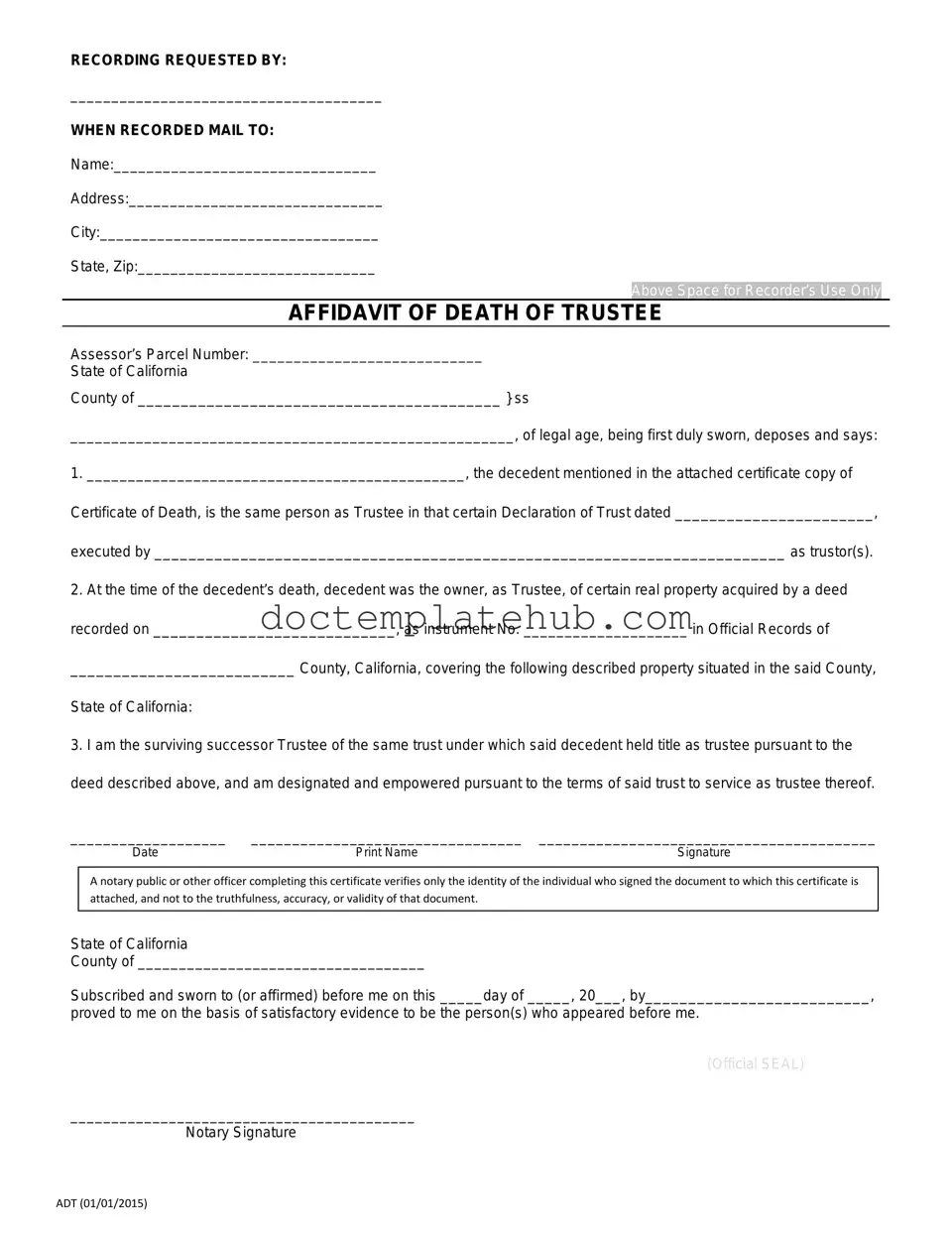What is the California Affidavit of Death of a Trustee?
The California Affidavit of Death of a Trustee is a legal document used to confirm the death of a trustee in a trust. This form helps to clarify the status of the trust and allows for the proper administration of the trust assets following the trustee's passing.
Who can file the Affidavit of Death of a Trustee?
Typically, the remaining trustee, a successor trustee, or a beneficiary of the trust can file the affidavit. It is important that the person filing has a vested interest in the trust or its assets.
What information is required to complete the affidavit?
The affidavit requires specific information, including the name of the deceased trustee, the date of their death, and details about the trust itself. You will also need to provide a certified copy of the trustee’s death certificate.
Is the Affidavit of Death of a Trustee necessary?
Yes, this affidavit is often necessary to transfer control of the trust assets to a new trustee or to manage the trust according to its terms. It provides legal proof of the trustee's death and helps to avoid disputes among beneficiaries.
Where should the affidavit be filed?
The affidavit should be filed with the county recorder's office in the county where the trust property is located. This ensures that the change in trusteeship is officially recorded and recognized.
Are there any fees associated with filing the affidavit?
Yes, there may be fees associated with filing the affidavit. These fees vary by county, so it’s advisable to check with the local county recorder’s office for the exact amount.
What happens after the affidavit is filed?
Once the affidavit is filed, it becomes part of the public record. The new trustee can then take over the management of the trust assets. This may include distributing assets to beneficiaries or managing investments according to the trust’s terms.
Can the affidavit be contested?
Yes, beneficiaries or interested parties can contest the affidavit if they believe it is inaccurate or if there are disputes regarding the trust. It’s important to resolve any conflicts early to avoid complications in the administration of the trust.
Do I need a lawyer to file the affidavit?
While it is not legally required to have a lawyer to file the affidavit, consulting with one can be beneficial. A lawyer can help ensure that the document is completed correctly and that all necessary steps are taken to manage the trust effectively.
